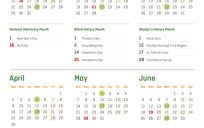Last week, a county government communications director in Oregon asked me to help her put together a session for their annual state meeting. We agreed that a “show and tell” hour, where attendees volunteer to show their county’s website and let their colleagues tell them what they think, could work well. I offered to do a short checklist to guide the discussion…and maybe to remind – even enlighten – the participants about what’s important on a government website.
So here is my 10-point checklist – the 10 best practices that I look for when I review a government website. How does your government website stack up?
See if you can answer “yes” to each of these.
- Audience immediately can identify what the site is about, who it’s for, what they need to do to complete their tasks. Most-used tasks are featured prominently in the intitial screen so the audience can find them in the first 7 seconds. Note: If you have them buried in a large, rotating “feature” box that takes 30 seconds to cycle through, answer “no.”
- Content is organized in topics the audience understands. No unnecessary topics.
- Navigation is easy to find, easy to understand, and easy to use. Navigation is consistent from page to page.
- Content is formatted for the web reader. Uses headers and sub-headers, bullets, and lists to make it easy to scan and find what you want. Font colors are dark against a light background. Uses a sans serif font to make it easy to read on the screen.
- Content is organized to make it easy for the audience to complete tasks. Most important information is at the top. Steps are clear. Content is short, to the point, and anticipates questions.
- Content is written in plain language. Uses words the audience understands and searches for. Content for the general public is written at an elementary reading level. Content is conversational…written in first (“I,” “we,” “us”) and second (“you”) person. Uses active verbs (“start here,” “read this”). Omits unnecessary words (e.g. “welcome,” “our mission is…,” “this website will…”).
- Links are clear and useful. Link text tells readers what they’ll find (no “click here” or “more”). Content is layered appropriately (not too deep). No broken links.
- Every graphic is essential to communicate critical information. No gratuitous graphics. No graphics just because they’re “cute” or “cool.” No photos of agency executives on the home page (put them on the “about us” page). Graphics aid skimming – no “eye-stoppers.” (Tip: check download time on a cell phone!)
- Contact information – mailing address, phone number(s), and email address(es) – is in plain sight. May be linked from “contact us.”
- Content is clearly current. Date of last review or update or “content current as of…” is in plain sight.
Related Posts
Customer Service Standards Worth Living Up To
Plain Language – the Key to Serving Citizens




Great tips Candi! We are currently rebuilding our website and are taking all of these things into consideration.